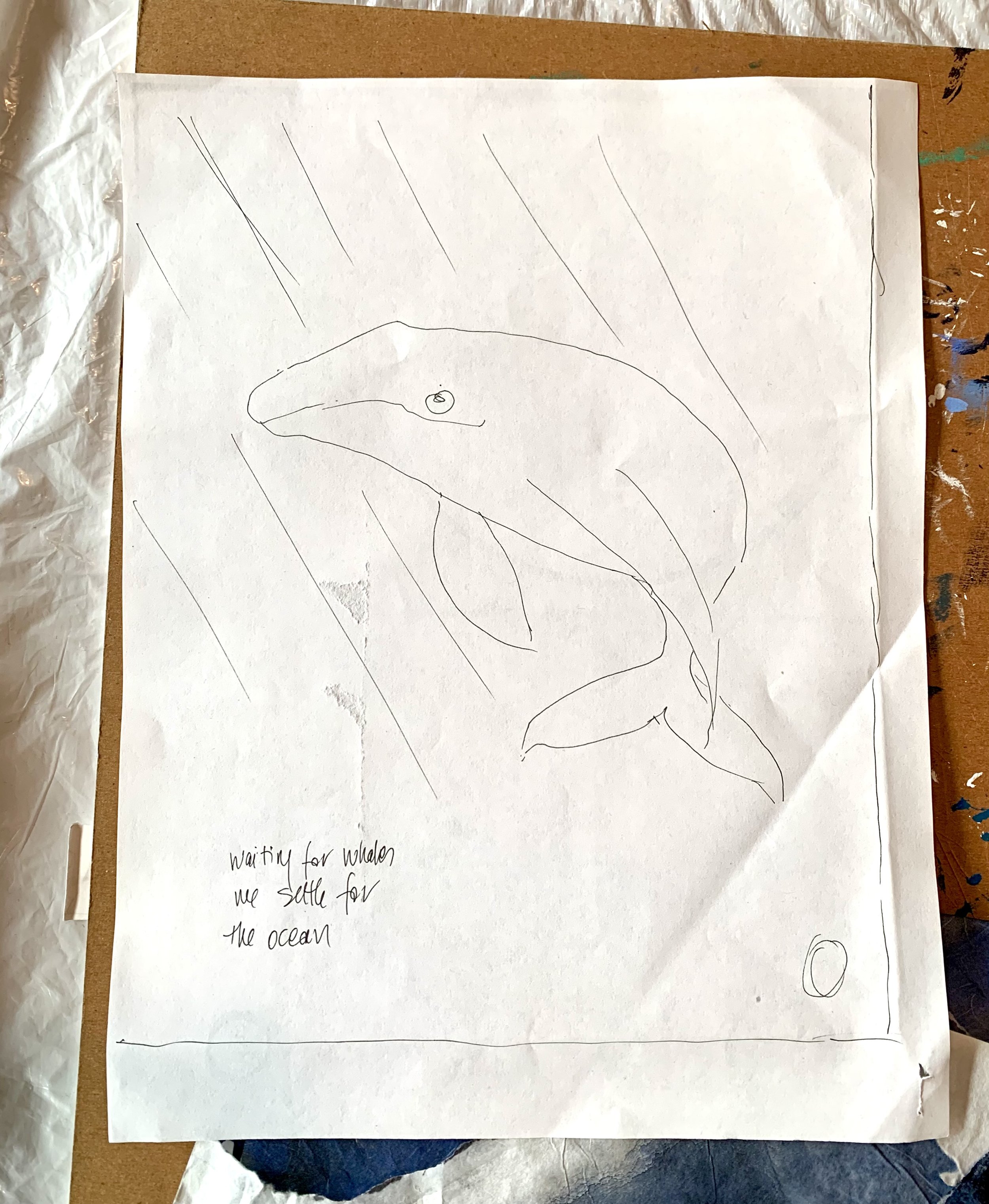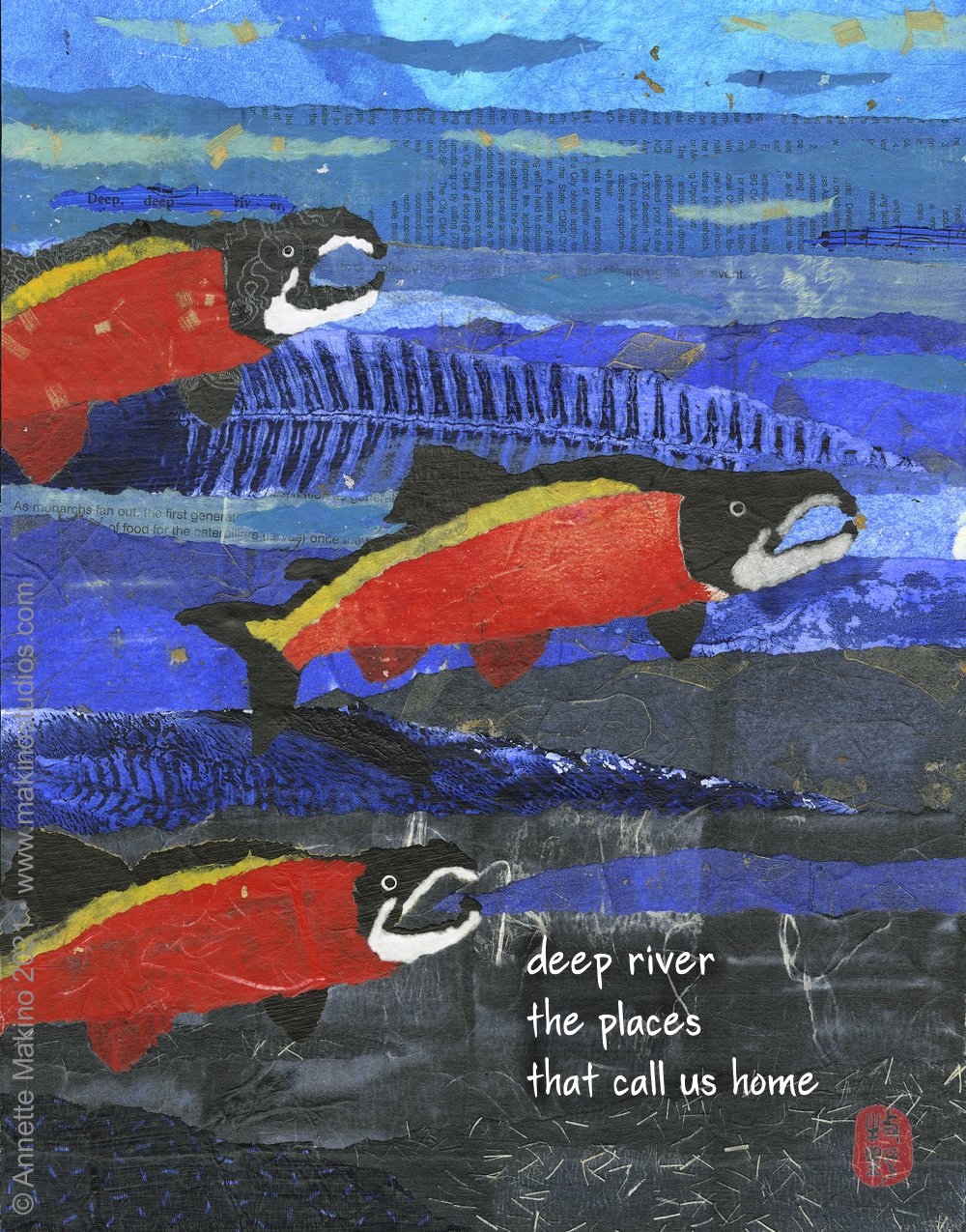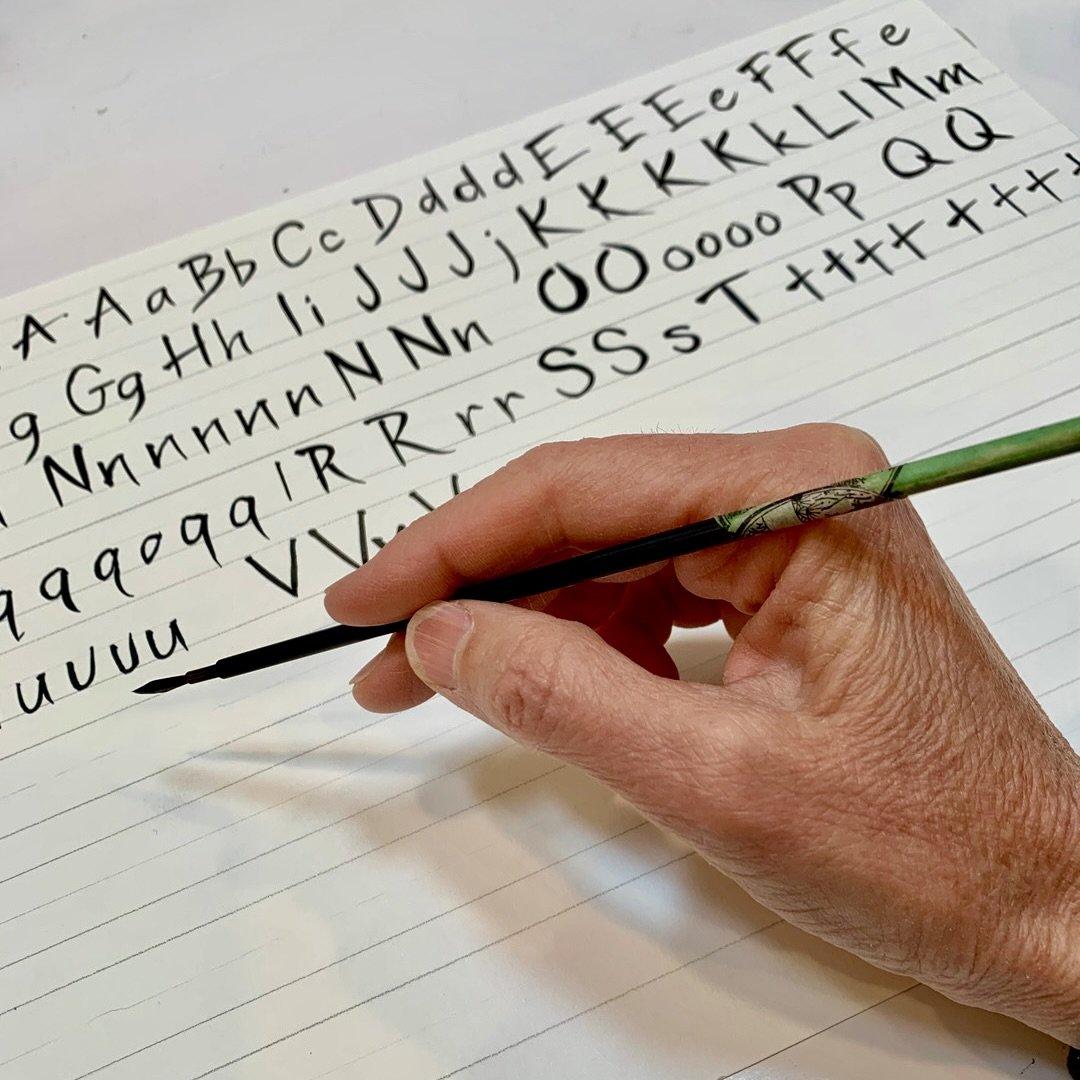Sometime last winter, on a coastal trail in Trinidad, CA, my husband and I sat on a bench and watched for migrating whales. We didn’t spot any, but there was a spectacular view of the ocean far below. I joked, “We’ll just have to settle for the Pacific.” Later that experience prompted a haiku.
A few months later, while at the riverside cabin we rent every summer, I had the urge to make a collage of a whale. Though I prefer to use my own photos, in this case I had to turn to Google. I found several appealing images of gray whales to use for reference and quickly sketched the idea.
Next I flipped through the collection of papers that I have painted blue. Sometimes I have to paint the papers I need for a particular piece; other times I’m lucky enough to find what I want already prepared.
Eureka! There was a piece of rice paper that I had quickly painted with turquoise blue liquid acrylics, deliberately leaving white streaks. (These are known as “flying whites” in Japanese calligraphy.) Turned on the diagonal, that sheet of paper perfectly conveyed the quality of beams of sunlight filtering underwater.
I also found some washi papers from Asia that I had painted dark blue using a brayer and a gel press, with bits of rice straw and wood shavings showing through. It was time to start tearing my papers into the desired shapes.
But the single whale in my draft looked lonely. The piece called out for a second whale.
Months earlier, I had painted some pages of my daughter’s high school copy of Moby-Dick. Perfect for the second whale’s fins! I glued everything down on a cradled wood panel. Now the two whales looked like they could be playing with each other, a much more interesting dynamic.
At home later, I added some finishing touches: charcoal to create shadows, a white pencil for highlights, and specks of white ink to make the eyes come alive. I glued on an imprint of my red name seal. I had the piece professionally scanned, then added the haiku digitally using a personalized font made from letters I had brush-painted.
waiting for whales
we settle for
the ocean
The finished haiga is my favorite piece of the year. It is the January art for my 2024 calendar of art and haiku, and I also made a card version that reads, “so glad you’re part of my pod.” (That has emerged as the best-seller among the eight new card designs I released this fall.)
“waiting for whales” is 8x10, made of rice paper, Japanese washi paper, book pages, acrylic paint, glue, charcoal, white ink and white pencil on cradled birch panel. © Annette Makino 2023
Another recent poem about whale-watching, a one-line haiku:
nowhere I’d rather be migrating whales
We didn’t find any whales on that hike, but I found plenty of inspiration. And with gray whale migration season starting again, we’ll keep our eyes peeled!
P.S. If you’re curious about the haiga art form, the Haiku Society of America has just published an essay I wrote titled, “Pleasures and pitfalls in creating haiga.”
•
“waiting for whales” appeared in the Haiga Gallery of Contemporary Haibun Online, December 2023.
“nowhere I’d rather be” appeared in The Heron’s Nest, September 2023
•
Makino Studios News
2024 calendar sale: These calendars of art and haiku are 10% off through this Sunday, Dec. 10! They feature 12 colorful Asian-inspired collages with my original haiku. Normally $12 each, currently $10.80.
Free shipping: Earn free shipping on everything in the shop through Sunday, Dec. 10, 2023. Enter promo code HOLIDAY23 at checkout. No minimum order. Applies to first-class shipping in the US.
Holiday Craft Market: The only in-person fair I am doing this season takes place this 10-5 this Saturday, Dec. 9 and 10-5 on Sunday, Dec. 10, at the Arcata Community Center in Arcata, CA. $1 admission. Catering by Mother’s Cooking Experience. Hope to see you there!
Made in Humboldt fair: The “Made in Humboldt” event at Pierson Garden Shop in Eureka, CA runs through Sunday, Dec. 24; there you will find my calendars, books, small prints and boxed notecards. There are 250 participating vendors, all local.
Water and Stone: My award-winning book of art and haiku includes 50 watercolor paintings with my original poems. Cost is $25. You can find it online here, on Amazon and in select local Humboldt stores.
Cards: Holiday, birthday, sympathy or everyday… right now there are 70 Makino Studios card designs to choose from, including eight new designs. I also have several notecard sets, including holiday designs.
Holiday order deadline: To make sure your package arrives by December 25, please order by Friday, December 15. Makino Studios ships via USPS Ground Advantage and first-class mail. The elves are standing by!
Thanks: I always appreciate your comments, including all the emailed responses to my last post, “It’s complicated: Celebrating a holiday with a dark past.”












